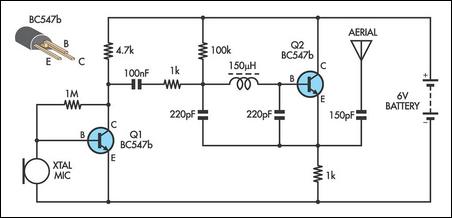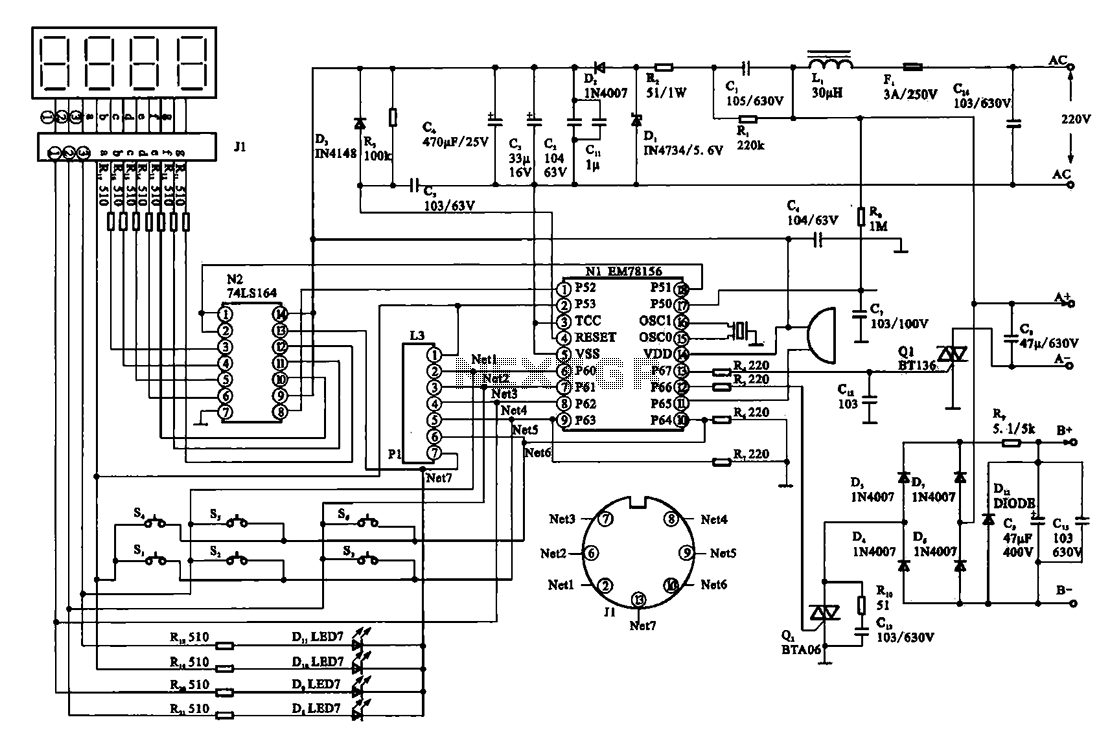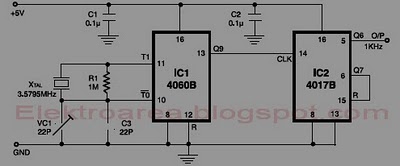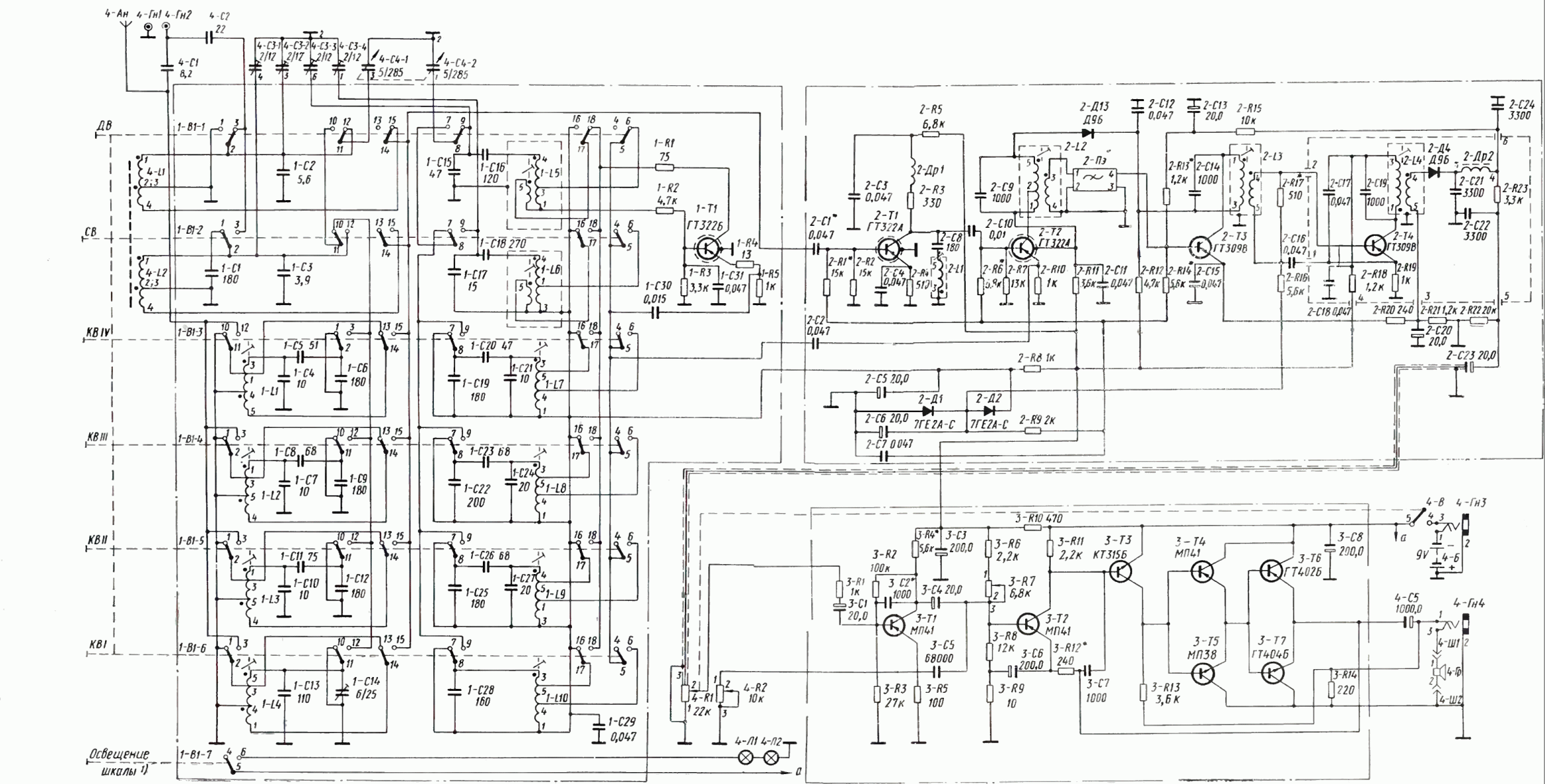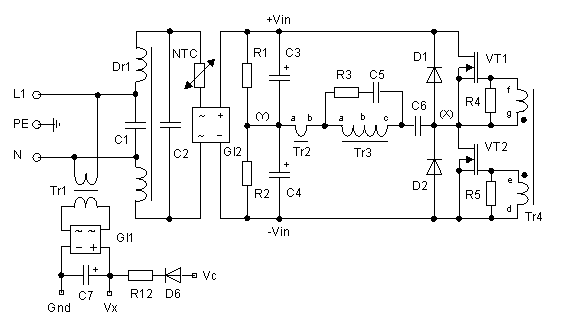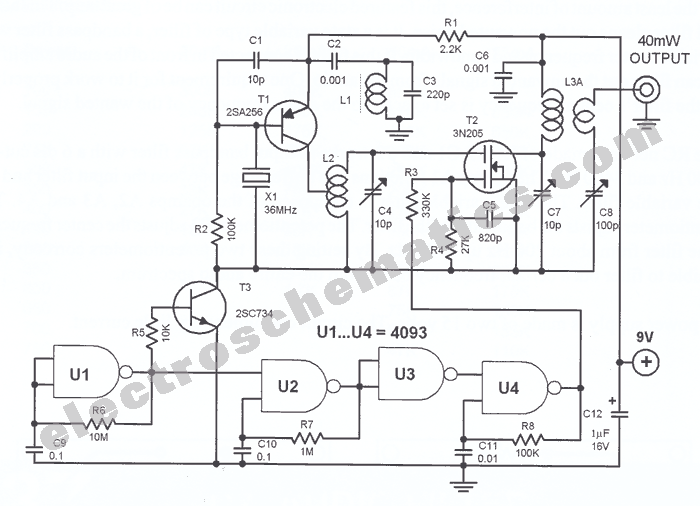
Linear power supply circuit
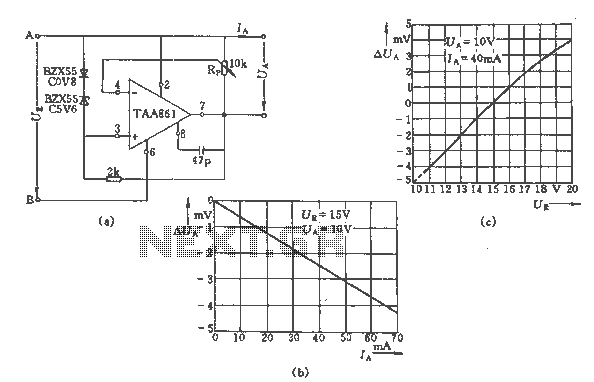
The regulator circuit adjusts the output voltage based on the potentiometer Rp and exhibits linear regulation characteristics. The output voltage Ua varies with the load current Ia, ranging from 0 to 70 mA, as illustrated in Figure (C) for the same input voltage Ue. The main technical specifications are as follows: Input voltage Ue ranges from 11 to 20 V, while the output voltage Ua can vary between 8 and 18 V. The maximum output current is 70 mA. Voltage regulation is observed at Ue = 1 V, Ue = 15 V, Ua = 10 V, and Ia = 40 mA. Load regulation is noted for Ia ranging from 0 to 60 mA at Ue = 15 V and Ua = 10 V. The dynamic resistance is specified as R1 = 60 mΩ, and the temperature coefficient of the output voltage is between 3 and 5 x 10^-5 V/K.
The regulator circuit described utilizes a potentiometer (Rp) to finely adjust the output voltage (Ua) within a specific range, providing flexibility in applications requiring variable voltage levels. The circuit's linear regulation characteristics ensure that the output voltage changes proportionately with variations in load current (Ia), which can reach up to 70 mA.
The input voltage (Ue) is designed to operate between 11 V and 20 V, allowing for compatibility with various power supply configurations. The output voltage (Ua) can be set between 8 V and 18 V, accommodating different load requirements. This range ensures that the circuit can effectively power devices with varying voltage needs.
The circuit's performance is characterized by its voltage regulation capabilities, particularly noted at specific conditions: when the input voltage is at 1 V and 15 V, the output voltage stabilizes at 10 V with a load current of 40 mA. This indicates that the circuit can maintain a consistent output despite fluctuations in input voltage, which is crucial for sensitive electronic applications.
Load regulation is also a significant feature, where the circuit maintains stable output voltage (Ua = 10 V) across a load current range of 0 to 60 mA when the input voltage is fixed at 15 V. This demonstrates the circuit's ability to adapt to varying load conditions without significant deviations in output voltage.
The dynamic resistance of the circuit, measured at 60 mΩ, indicates minimal voltage drop across the regulator during operation, contributing to efficient power delivery. Furthermore, the temperature coefficient of the output voltage, ranging from 3 to 5 x 10^-5 V/K, suggests that the output voltage will experience only slight variations with changes in temperature, enhancing the reliability of the circuit in diverse environmental conditions.
Overall, this regulator circuit is suitable for applications requiring precise voltage control and stability, making it a valuable component in various electronic systems.By the regulator circuit output voltage of the potentiometer Rp, and has a linear regulation characteristics. Figure (b) shows the output voltage Ua deviation with the load current Ia (0-70mA) a curve of FIG. (C) for the same input voltage Ue of the curve. Main technical data: Input voltage: Ue = 11 ~ 20V Output voltage: Ua = 8 ~ 18V Maximum output current: Ia = 70mA Voltage Regulation (Ue = 1V, Ue = 15V, Ua = 10V, Ia = 40mA); Load regulation (Ia = 0 ~ 60mA, Ue = 15V, Ua = 10V); Dynamic resistance: R1 = 60m Euro Temperature coefficient of the output voltage: 3 ~ 5X10-5 V / K
The regulator circuit described utilizes a potentiometer (Rp) to finely adjust the output voltage (Ua) within a specific range, providing flexibility in applications requiring variable voltage levels. The circuit's linear regulation characteristics ensure that the output voltage changes proportionately with variations in load current (Ia), which can reach up to 70 mA.
The input voltage (Ue) is designed to operate between 11 V and 20 V, allowing for compatibility with various power supply configurations. The output voltage (Ua) can be set between 8 V and 18 V, accommodating different load requirements. This range ensures that the circuit can effectively power devices with varying voltage needs.
The circuit's performance is characterized by its voltage regulation capabilities, particularly noted at specific conditions: when the input voltage is at 1 V and 15 V, the output voltage stabilizes at 10 V with a load current of 40 mA. This indicates that the circuit can maintain a consistent output despite fluctuations in input voltage, which is crucial for sensitive electronic applications.
Load regulation is also a significant feature, where the circuit maintains stable output voltage (Ua = 10 V) across a load current range of 0 to 60 mA when the input voltage is fixed at 15 V. This demonstrates the circuit's ability to adapt to varying load conditions without significant deviations in output voltage.
The dynamic resistance of the circuit, measured at 60 mΩ, indicates minimal voltage drop across the regulator during operation, contributing to efficient power delivery. Furthermore, the temperature coefficient of the output voltage, ranging from 3 to 5 x 10^-5 V/K, suggests that the output voltage will experience only slight variations with changes in temperature, enhancing the reliability of the circuit in diverse environmental conditions.
Overall, this regulator circuit is suitable for applications requiring precise voltage control and stability, making it a valuable component in various electronic systems.By the regulator circuit output voltage of the potentiometer Rp, and has a linear regulation characteristics. Figure (b) shows the output voltage Ua deviation with the load current Ia (0-70mA) a curve of FIG. (C) for the same input voltage Ue of the curve. Main technical data: Input voltage: Ue = 11 ~ 20V Output voltage: Ua = 8 ~ 18V Maximum output current: Ia = 70mA Voltage Regulation (Ue = 1V, Ue = 15V, Ua = 10V, Ia = 40mA); Load regulation (Ia = 0 ~ 60mA, Ue = 15V, Ua = 10V); Dynamic resistance: R1 = 60m Euro Temperature coefficient of the output voltage: 3 ~ 5X10-5 V / K
